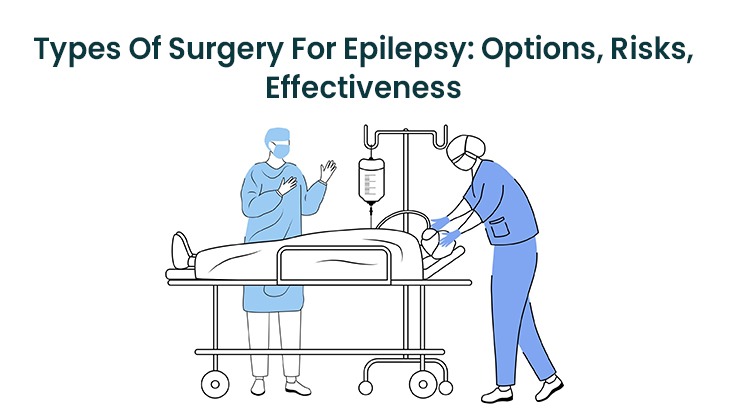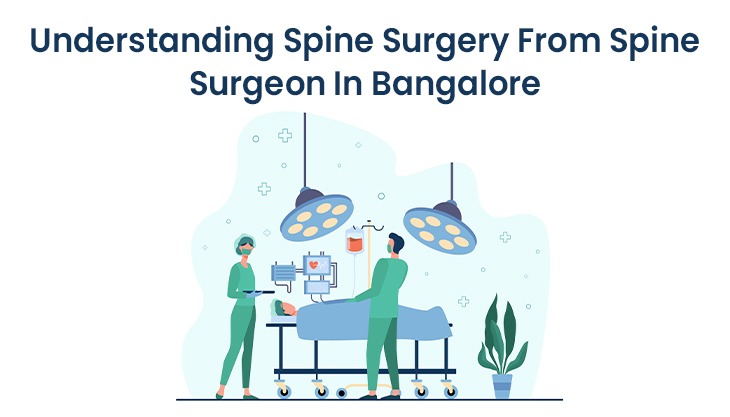The human brain has around 86 billion neurons or nerve cells.
The nerve cells or neurons to be precise have the responsibility to carry messages and information within the brain and the remaining nervous system. They carry this information in the form of electrical impulses and chemical signals. Sometimes disturbance can happen in the nerve cell activity, and this may lead to seizures. This seizure disorder is Epilepsy.
When it comes to Epilepsy, medications are the most used type of treatment. However, sometimes, your Doctor/Neurosurgeon may suggest that you go for Epilepsy Surgery. You may wonder why? Let’s understand the reasons, the options, their risks, etc.
Why would you need to undergo epilepsy surgery?
In Epilepsy patients, Brain Surgery will be done to either implant a device to treat epilepsy within the brain, disrupt the seizure-causing nerve pathway, or completely remove the area causing seizure. However, do note that surgery is an option only if –
* The seizures are very strong, even making the patient disabled
* Epilepsy medications do not prove to be effective to control seizures i.e. it is a drug-resistant or refractory epilepsy.
* Epilepsy medications led to severe drug side effects, affecting the quality of the life of the patient.
* The source of the seizures or the ‘seizure focus’ is in a well-identified area of the brain. It can be identified through tests such as EEG, Video EEG, MRI, PET, SPECT, etc.
* And lastly, if the seizure-causing area does not control critical functions of the patients like movement, sensations, language control, motor skills, etc.
If an epilepsy patient faces any of the above-mentioned problems, surgical treatment can be deemed necessary. You can always refer to a Neurosurgeon second opinion consultant. for surety. Now that we explained why Epilepsy surgery, let’s see their types.
Types of Surgery for Epilepsy:
-
Focal Resection or Resective Surgery: In this type of surgery, the area causing seizures is removed. Focal Resection can be further divided based on where the ‘Seizure Focus’ is located within – the temporal lobe, the frontal lobe, or the parietal & occipital lobe. Temporal lobectomy is the most common of all the Types of Surgery for Epilepsy.
-
Lesionectomy: This type of surgery is done for patients having structural abnormality like vascular malformation or tumor that causes seizures. During the surgery, the lesion causing focal seizures is removed.
-
Hemispherectomy & Hemispherotomy: This is one of those Types of Surgery for Epilepsy that are mostly done for children who have a large area of one of their brain hemispheres as the seizure focus. In Hemispherectomy – both Anatomic as well as Functional hemispherectomy – the area of the onset of the seizure is removed and separated from other brain tissues. Whereas in Hemispherotomy, instead of removing large sections, several holes are made to serve a similar purpose.
-
Multiple Subpial Transections (MST): This type of Brain Surgery is done if the Seizure Focus is in the area that cannot be removed as it controls important functions. Herein, your surgeon will make fine transections in the gray matter to interrupt the nerve pathway that is spreading the electrical seizure.
-
Corpus Callosotomy: Corpus Callosotomy is done for patients who have both the hemispheres of their brain involved in the seizures, resulting in intense seizures. Thus, in this surgery, the surgeon will split the connection pathway of both the cerebral hemispheres, preventing the spread of seizures from one hemisphere to another.
-
Laser Interstitial Thermal Therapy (LITT): This is a minimally invasive procedure as the surgery is done without opening the skull. Herein, the exact area to be operated upon is precisely mapped out using an MRI. At that exact area, the laser is pinpointed and the seizure focus is eliminated.
-
Neurostimulation Devices: This includes three different Types of Surgery for Epilepsy wherein nerve stimulation devices are implanted within your skull – (i) Vagus Nerve Stimulation (VNS) that controls the Vagus Nerve to lower seizure activity; (ii) Responsive Neuro Stimulation (RNS) that detects seizure activity within the brain and gives stimulation to stop it; and (iii) Deep Brain Stimulation (DBS) that is used for patients that cannot be operated for other surgeries, and are drug-resistant.
Now that you know the types, let’s understand the basic risks involved in these surgeries.
Risks involved with Epilepsy Surgery:
A few complications can occur during an Epilepsy Surgery and the risks involved are –
- Stroke
- Mood changes
- Depression
- Visual impairment
Along with the above-mentioned risks, there may also be problems caused by the patient's memory and Language understanding.
Effectiveness of Epilepsy Surgery:
The effectiveness of the surgeries varies from patient to patient and depending upon the type. Some patients may be completely cured of seizures, for some the severity may be reduced. There will also be cases where the patient may have to undergo a second surgery or reoperation if not all the tissues causing seizures are removed during the initial surgery.
So, that’s it. Hope you are now more informed and can make a decision if you or your family member is considering undergoing surgery for epilepsy. We still suggest you approach a Neurosurgeon second opinion consultant and accordingly take the next steps.






Post Comments